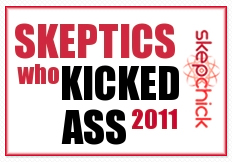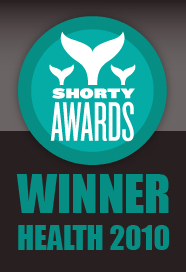We’re on a bit of a roll here in Oz with crackdowns on alternative medicine, and there was even more news this week with the announcement of the removal of a number of complementary medicines from sale by the TGA.
In a spot check on about 400 products, 9 out of 10 were found to breach regulations. As a result a ”significant number” of products were removed from the Australian Register of Therapeutic Goods or ARTG, which currently lists 10,250 complementary medicines, including vitamins, minerals and herbal preparations. The breaches, largely relating to false claims of curative powers on labels, means the products can no longer be legally sold. Which products have been removed and precisely why, was not revealed by the TGA.
The complementary medicine business is worth over 4 billion dollars a year in Australia, but evidence that they work is not required by the TGA before they are assigned an official looking number and appear on the shelf of your local pharmacy next to aspirin and cough medicine.
Instead, the TGA operates a “self assessment” online registration system and undertakes post market reviews where approximately 25% of products are randomly selected for a review of their labels, product specifications and summary of evidence. Although the TGA website states “… evidence must be held by sponsors which demonstrates the indications and claims are true, valid and not misleading” the latest review indicates this is clearly not the case for the majority of products. A second issue is that even when products are removed from the listing, manufacturers can simply go back on line and re-register the product under a different name effectively getting it listed again in 24 hrs.
There are two types of drugs and clinical devices controlled by the TGA, those which have been evaluated for safety, quality and efficacy are designated a number preceded by “AUST R”. An example is antibiotics or hay fever medication bought over the counter at the chemist or even low risk products such as cough medicines. According to the TGA website, “The degree of assessment and regulation they undergo is rigorous and detailed, with sponsors being required to provide comprehensive safety, quality and efficacy data.”
On the flipside, “AUST L” are called listed products and include complementary and supplementary medicines such as homeopathy, ear candles and detox kits, many of which have not gone through clinical testing or indeed have any scientific evidence that they work (in the case of ear candles there is evidence that they cause harm). Listed medicines are considered by the TGA to be of lower risk than registered medicines, thus they are not assessed for efficacy by the TGA but only for quality and safety.
Clearly the problem here is the TGA’s reliance on “self assessment” as a means for determining a product’s efficacy. But it gets worse when you scrutinise precisely what they define as evidence for these products.
There are two streams of “evidence” accepted by the TGA, one being scientific and the other “traditional use”. Traditional use refers to documentary evidence that a substance has been used over three or more generations for a specific health related or medicinal purpose. Traditional therapies include Traditional Chinese Medicine (TCM), traditional Ayurvedic medicine, traditional western herbal medicine, traditional homoeopathic medicine*, aromatherapy and other indigenous medicines.
Further, there are also increasing levels of evidence within this, the greater your evidence the more claims you are entitled to make. For example, three independent written histories of use in the classical or traditional medical literature are acceptable and/or availability through any country’s government public dispensaries. So this includes chiropractic in Australia and homeopathy in the UK.
Recently the TGA announced a comprehensive review of the way it communicates regulatory processes and decisions to the public in an effort to improve transparency. The aim of the overhaul is multifaceted but one aspect is to ensure that the Australian public is better informed about the benefits and risks of therapeutic goods, including all medicines and devices. In particular the TGA aims to inform consumers that they do not test AUST L drugs, and as such cannot guarantee that they work as claimed.
So the TGA will continue to accept AUST L products for listing under the clearly flawed self-assessment programme and as a method for improving transparency, inform consumers that their system doesn’t really work. It’s also worth noting that as a consumer you are free to make a complaint about a TGA listed products, and if they agree the product has breached regulations, the complaints resolution panel will issue retraction orders to the company. However if the company chooses to ignore the sanctions, the TGA will not enforce them. Between 30 and 50% of companies called out for making false claims do ignore the sanctions and the TGA has never made a prosecution for refusing to comply. Another issue concerning transparency for the general public is they results of an investigation by the TGA do not appear on their website for up to 6 months. So a consumer searching the web has little chance of knowing that the product is making false claims.
This black hole where TGA complaints disappear was covered by ABCs Lateline programme earlier this year with respect to a Homeopathy website which claimed they could cure cancer and AIDS with water. When the story broke the owner of the website not only continued to ignore the sanctions but jumped the shark by publishing a response to the story replete with dozens of spurious links as to why their claims were correct.
One would hope that the review currently up for public comment will address and correct some of these issues. As it stands the burden is on the consumer to determine whether a product works or not, as an official looking AUST L number is no guarantee that the product does what it claims. And according to the recent review, 9 out of ten product don’t. Asking a pharmacist – which is where many of them end up – whether the product works can also be hit as miss and myself and Richard Saunders have experienced when enquiring of pharmacists about homoeopathy and being told it was “herbal”.
If you are in Australia you can submit comment to the review by February 11th. The panel are asking for submissions from health professional and the general public on topics such as about instances where it could have been useful for you to have had access to better information about your medicine, supplement or device and how you would like to have access to this information whether through your pharmacist or on the internet.
—–
Comment from the Sydney Morning Herald here
More from the Sydney Morning Herald here
* One wonders what defines “traditional homoeopathic medicine”. Perhaps it’s homeopathy prior to the “water has a memory” theory – a fairly recent invention – to get around that pesky Avogadro’s number which dictates that after a certain level of dilution there are no molecules of the active ingredient remaining. Homeopaths get around this problem by saying that the water maintains a memory of the original substance. But conveniently the water does not remember all the other things it has seen such as faeces, parasites, viruses and other nasties.
Browse Timeline
- « Holy haleakala! Bad Universe coming to Australia!
- » Power Balance Admits Their…..bad publicity has gone viral





